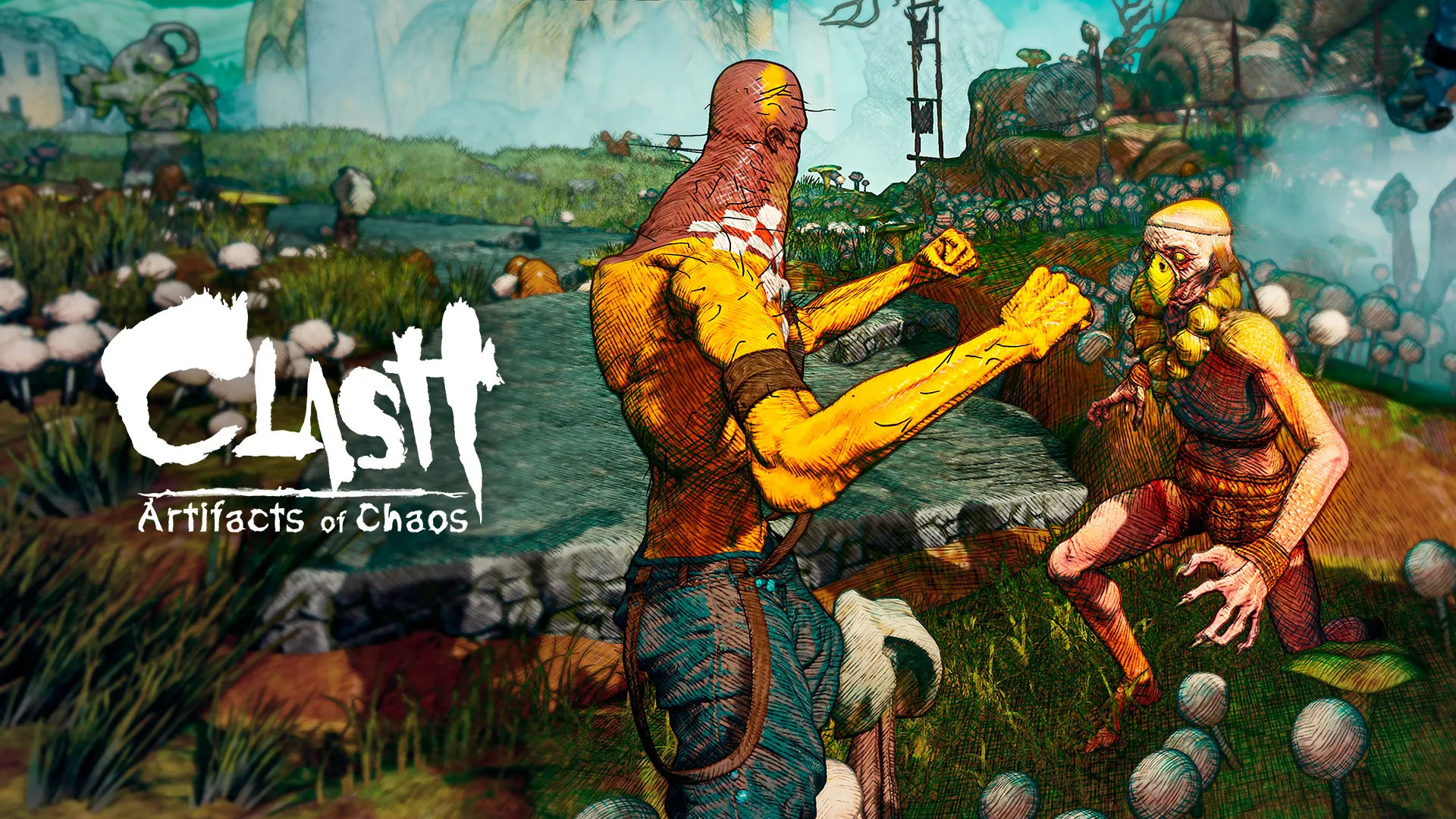
With the release of ACE Team’s latest esoteric epic Clash: Artifacts of Chaos upon us, we had the chance to sit down with their team and pick their brains on the creative process behind such a wild title.
The game definitely has hints of their previous Zeno Clash titles, however with a new presentation and currently not known ties to its predecessors. What can fans expect in the wildly different new game?
Without further ado, find our full Clash: Artifacts of Chaos interview below!
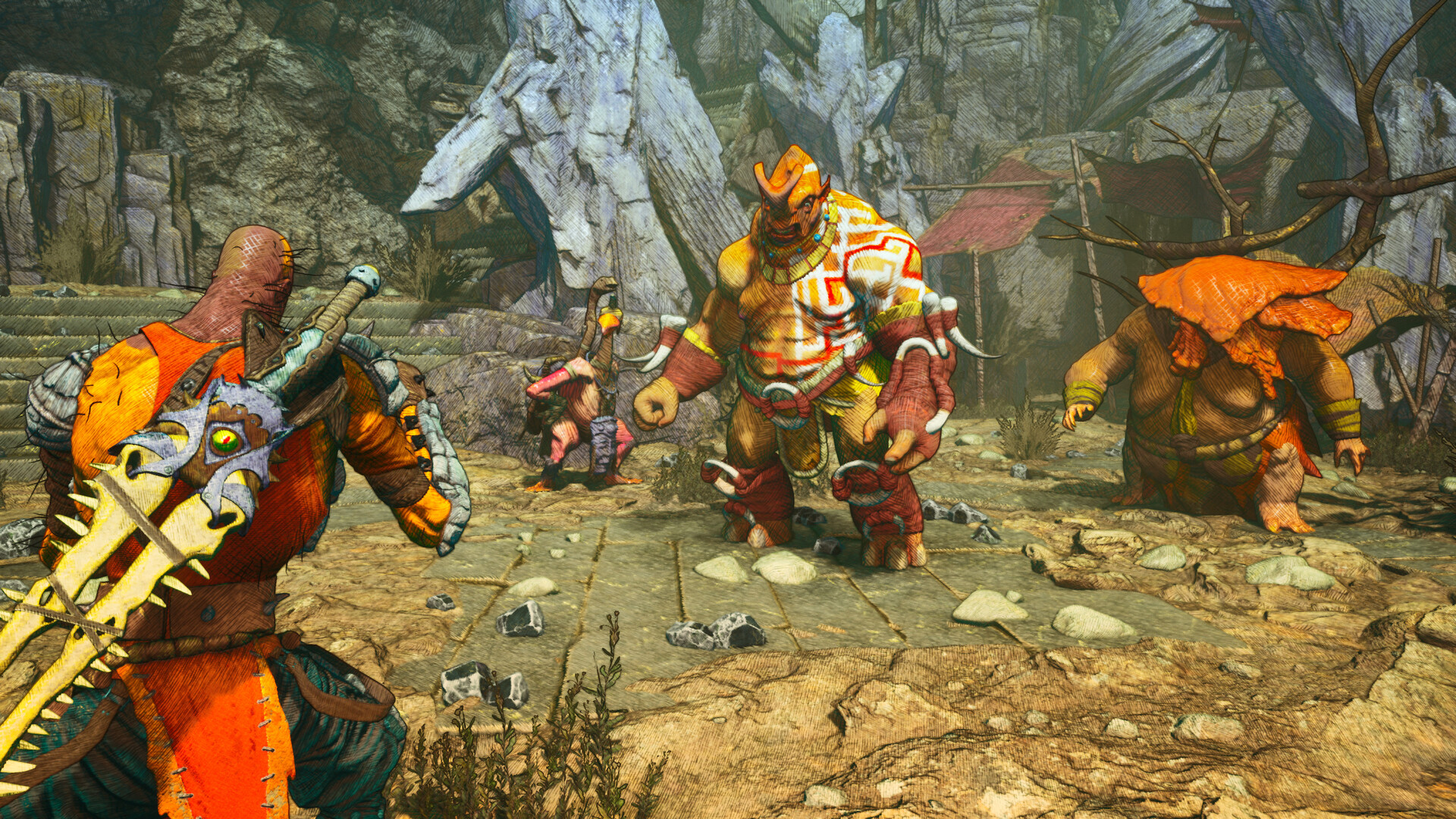
What is Clash: Artifacts of Chaos about? What themes were the team interested in exploring?
Game designer Andres Bordeu: The game is our new take on the action-adventure genre, where players get to explore fantastic locations, encounter all sorts of creatures full of personality, and interact with many game systems, some of these completely novel, and many other familiar mechanics from different genres.
This project took form after many of the designers fell in love with the souls-like genre. We don’t think of Clash as a traditional souls-like game, but it draws inspiration from souls-like ideas that we’ve made our own.
How is Clash connected to the Zeno Clash?
Both games are set in the same universe. I can’t get in to too many details without getting into spoilers, but we wanted to revisit the world of ‘Zenozoik’ (the fantasy land from Zeno Clash) for a long time now.
The game’s story is told in a way that newcomers don’t need to have played any of the previous games to understand the events, but people who have played our past games will still find many hints and cues to things that are present in the other titles.
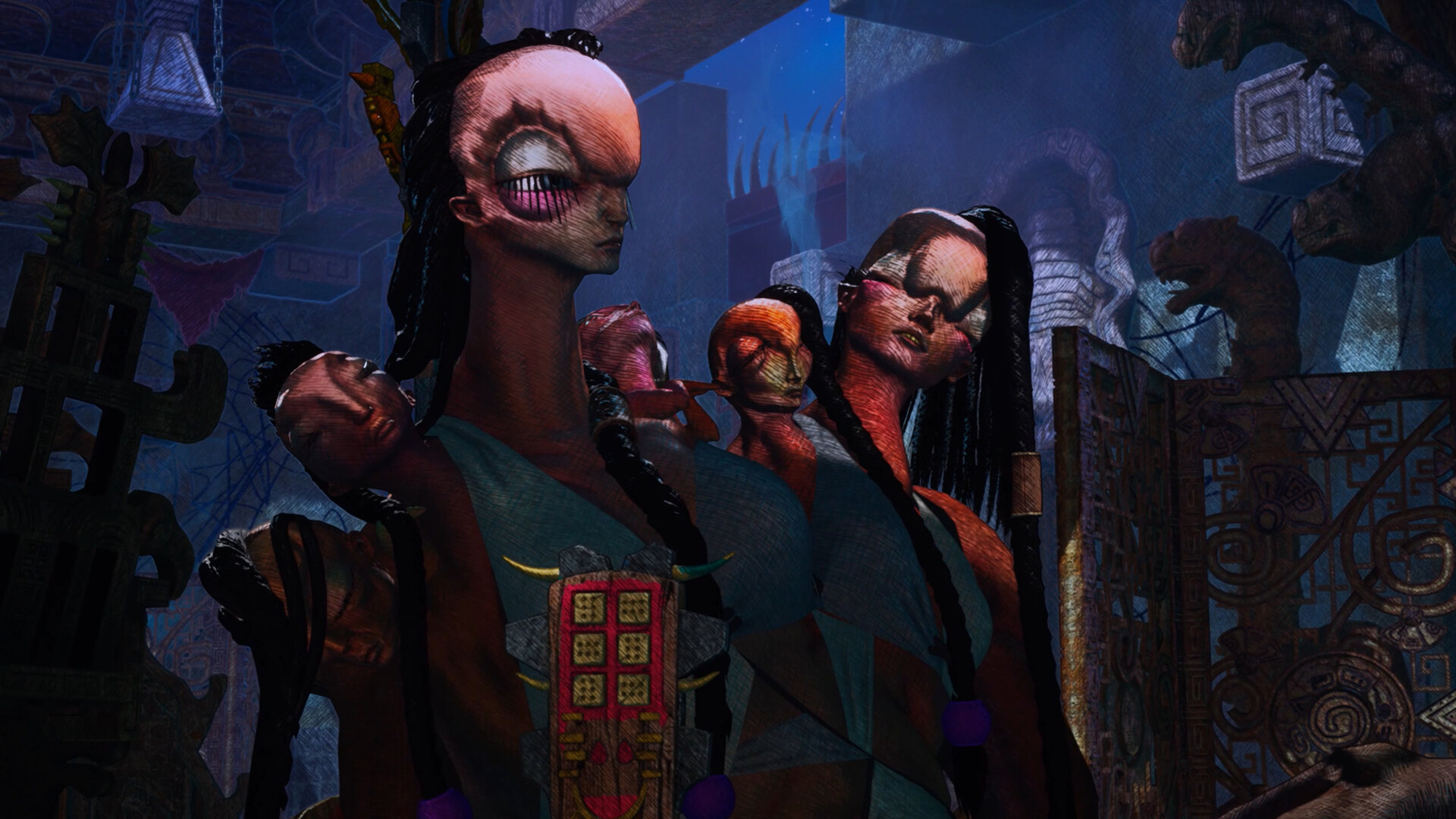
What games were an influence on the gameplay of Clash?
As mentioned, the souls-like genre was one of the biggest catalysts for the creation of Clash. Our interpretation of the genre is pretty unique, but there are direct cues that we took from specific titles, such as the excellent level design from Bloodborne, which was a big inspiration for the environment layouts.
We’ve also taken some cues from traditional fighting games, specifically attack cancelling, something that is common in Street Fighter (we’ve toyed with this system in previous tiles too).
What was the decision behind making the combat primarily 3rd person, as opposed to the 1st person view in the Zeno Clash games?
We wanted to create a game where players had a stronger connection with the lead characters. Because the game is strongly story focused, and there’s a lot of character development, specifically between the protagonist and the creature he has to protect, this would not have worked so well in a first-person perspective.
Seeing ‘Pseudo’ (protagonist) and ‘the boy’ (companion creature) interact throughout the game is always charming and we think people will want to explore the world not only to see the locations but also to see how these two bond together.
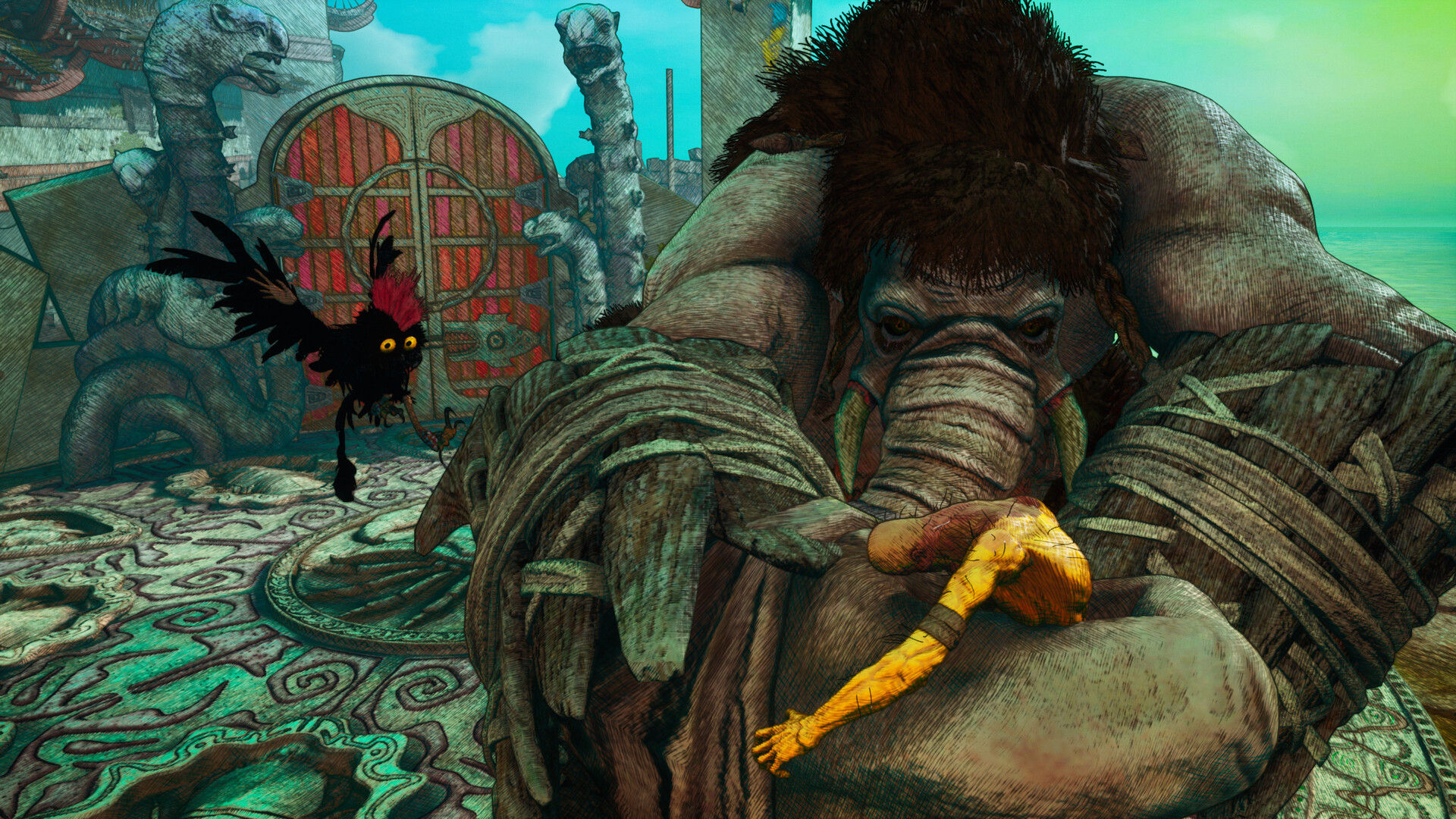
The design of the protagonist of Clash is unlike most video game characters who are intended to be attractive. What drove the team to imagine such a distinct character design?
That was a very conscious decision. We wanted to go the opposite direction of what most studios are doing. The design choices in this game have been very similar to the choices we made when we developed Zeno Clash, all those years ago.
We had a lot of early concepts from different characters, with all kind of morphologies, and we let the designs talk back to us, instead of trying to adapt them to a specific goal. We knew we wanted to develop a story about fatherhood and strong ties, and we thought it was more interesting to explore these concepts with characters that break the mold.
Coincidentally, God of War also explored these themes while we were planning the development of Clash, and it was interesting to see how they developed those concepts in their game. It’s nice to see that there is an interest in the gaming community for these themes.
ACE Team games have a distinct visual style and have inspirations from all kinds of artists. Which artists were the inspiration for Clash?
We obviously gravitated back to the original inspirations behind Zeno Clash, which featured illustrations from John Blanche (regarding his ‘punk fantasy’ style), the works of Hieronymus Bosch, Gaudi, etc. The main difference is that we wanted to achieve something that we hadn’t been able to do when we made Zeno Clash and Zeno Clash 2.
This was the execution of the rendering style, which is meant to emulate the illustrations from fantasy books of the 80s. We had attempted that for Zeno Clash 2, and at the time, the resources that we had available did not allow us to get there. After all these years developing different art styles we were finally confident that we were able to achieve this.

The cast of characters are truly alien-looking and barely look like anything on earth. Was there ever a consideration of having the characters speak in a made up language to further emphasize their distance from humans?
This was something that we discussed a lot about in the first game, but we eventually decided to stay away from a made-up language (at least for the dialogue/voice-overs). The problem with a completely alien language is that it would be very difficult to present the story and the emotional depth of the characters with a foreign language.
However, this is something that our composer did want to feature in the music. Unlike the previous games, Clash: Artifact of Chaos has a lot of music in song format with singers/performers, and the songs are delivered in a fantasy language that Patricio Meneses created. This added a lot of identity to the music and works fantastic in the game.
On average, how long will it take for gamers to complete Clash?
Based on playtesting that we’ve seen it should be around 15 to 25 hours. The variability depends on your play style. If you’re a completionist that wants to explore every area of the game you can spend quite a while in the world.

How does the dice mini game factor into the grander scope of the main game?
The ‘ritual’, which is what we call it, is part of the story and allows players to introduce variety in the combat encounters by applying ‘consequences’. The winner will select a consequence of his choice that changes how the fight that follows plays out.
It can be simple things like confining the fight to a small area or more critical effects like having a swarm of bees attack the opponent. This can add a lot of variety to encounters, but it’s optional most of the time. It really depends on every player’s style if they wish to use it often or not.
What was the idea behind leaning on Street Fighter-like canceling in combat?
This was a concept that we had already explored in previous titles, specifically in ‘Abyss Odyssey’. It ended up being so much fun in that game that we knew we wanted to bring it back in a future action-oriented title. The cool thing about the cancelling system is that is creates a lot of custom combos, that we as designers can’t predict.
The combo videos our community created for Abyss Odyssey were insane. That was a 2D fighter, so I don’t expect combos to be so long in this game, but we’re still hoping to see some creative examples of mix-ups between the cancelling system and switching combat stances.
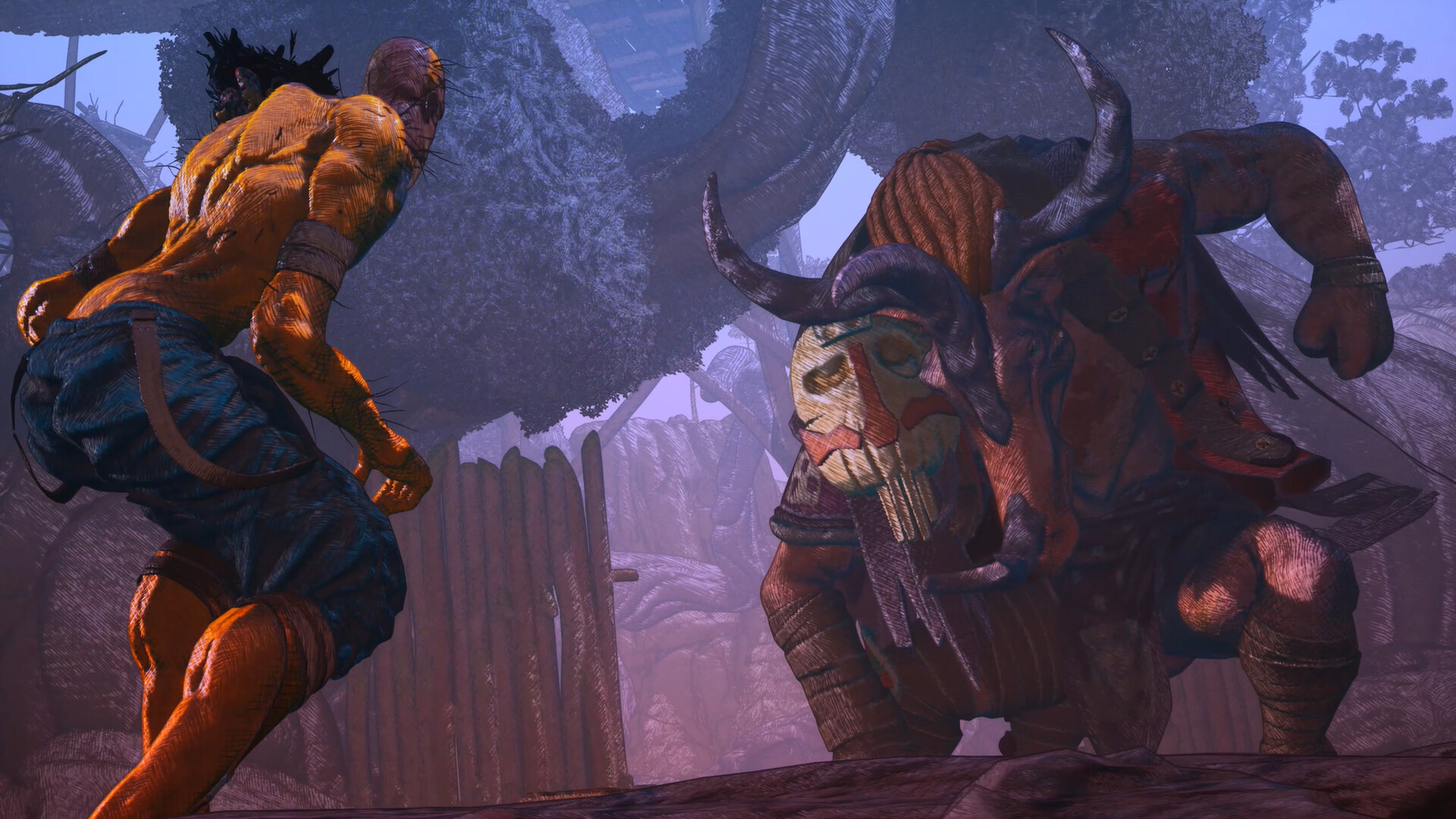
Aside from fighting and dice, what else can players expect from Clash?
This game is full of traditional RPG systems that affect stats, equipment, weapons, etc. I think one of the shortcomings of Zeno Clash 2 is that we were also aiming to create a more ‘RPG-esque’ experience, but it ended up being a very light implementation.
Here we’ve taken a lot of time and resources to make sure that exploration plays an important part of the game as players can unlock new combat stances, find all sorts of perks, and develop many systems that are more akin to a true RPG. You can create your own version of Pseudo (your ‘build’), and it can be a very different experience to someone else based on where you spend your resources.
How is the easier modes made easier and how are hard modes made harder?
In Clash there are no difficulty levels. We decided to take the same approach than the souls-like games. It’s really up to players to develop their character build and own strategies.

If Clash: Artifacts of Chaos is a success, what would ACE Team do for a sequel or successor?
Every single drop of creativity has been spent on this game. I don’t think we’ve had a moment to sit back and think that ahead. We’re doing our best effort to make sure this is a worthy addition to our fantasy world, and that Artifacts of Chaos ends up being the best game it can.
There’s a ton of love put in to this project. Time will tell if we decide to revisit the world of Zenozoik, but for now, we’ll be moving to a different concept after Clash is complete.
Is there any chance of Zeno Clash 1 and 2 getting remasters or ports to current platforms?
That’s unlikely, at least from our end. We’re a pretty small studio, so it would be impossible for us to tackle such a gargantuan task (those games would probably have to be built from scratch because of how old they are). If there was interest it would have to come from a third party.
Clash: Artifacts of Chaos is was just launched across Windows PC (via Steam and the Epic Games Store), Xbox One, Xbox Series X|S, PlayStation 4, and PlayStation 5.